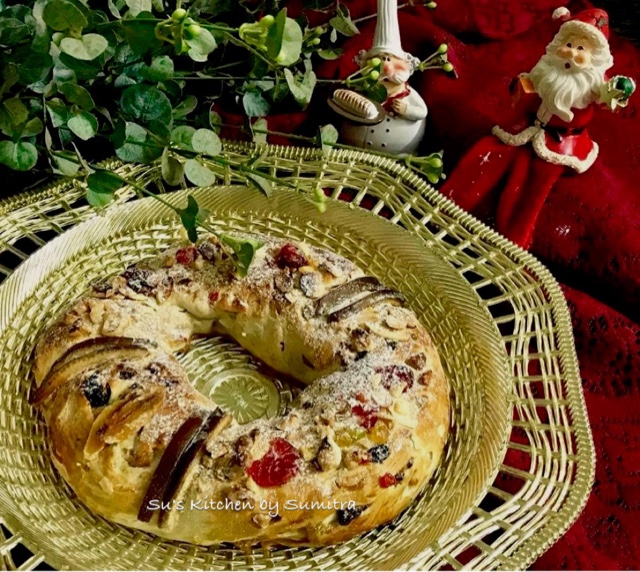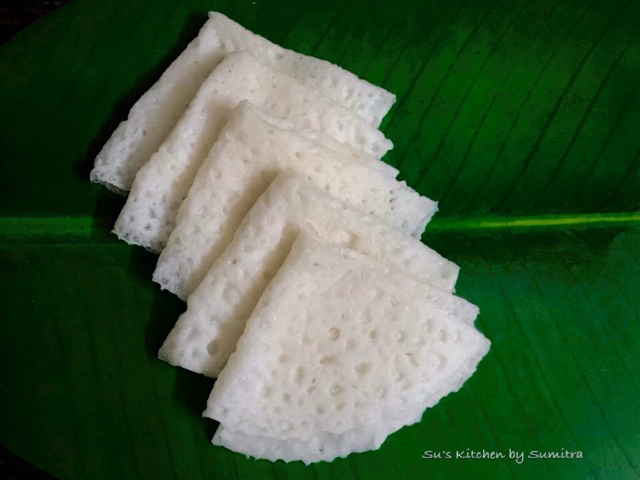Merry Christmas to all...
Bolo Rei (King’s Cake) is a traditional Portuguese cake that is eaten around Christmas, that’s 25th December to 6th January. There won’t be any Christmas without Bolo Rei on the table. Each family in Portugal either buys or makes it at home during the season.
This recipe made it’s way to Portugal from France during the 19th century when Confeitaria Nacional opened it’s official bakery in 1829. The Confeitaria was the first to introduce this recipe.
Although it is called a cake, Bolo Rei is more like a sweet bread. Traditionally there is a large fava bean and a coin placed inside the Bolo Rei. And the one who gets the bean has to make the cake for the following year and the one who gets the coin, is the lucky one.
Normally you can add 50 ml of Port wine into the dry fruits and keep it for overnight but I haven’t add the port wine into my recipe. The dough is kept overnight for rising, but I kept it for 2 hours.
Here is my version of the recipe -
Ingredients
500 grams All Purpose Flour
125 ml Lukewarm Milk
65 grams Caster Sugar
1 sachet / 11 grams Dry Yeast
2 Eggs
1 Egg white
100 grams Butter
2 tbsp Candied Apricot chopped
2 tbsp Candied Cherry chopped
2 tbsp Raisins chopped
2 tbsp Black Raisins chopped
1/2 cup Dried Fruits chopped
2 tbsp Walnuts chopped
2 tbsp Almond chopped
2 tbsp Cashews chopped
1 Egg yolk to brush
2 tbsp Powder Sugar for sprinkle
For Garnishing
Ingredients
1 tbsp Almond chopped
1 tbsp Walnut chopped
1 tbsp Dried Fruits
1 tbsp Candied Apricot sliced
1 tbsp Candied Cherries whole
Some Lemon Candied peels sliced
Method
Take 1/2 the quantity of the lukewarm milk, add 1 tbsp of caster sugar, stir the milk, then add the yeast. Stir it once again and let it rise. Meanwhile mix all the dried fruits, candied fruits and nuts together and keep it aside.
Take flour, sugar, butter, eggs, remaining milk and yeast in a mixing bowl and knead it into a dough for 5 to 7 minutes. I have used a kneading machine, but you can also knead it by hand. Cover and keep it aside to rise. Now add the dried fruits and nuts. Knead the dough again. Divide the dough into 2 portions. Take a portion of the dough, roll it into a thick rope and round it into a wreath on a baking sheet. Cover and keep it for 30 minutes. Then brush the dough with the egg.
Garnish the cake with candied peels, nuts and dried fruits. Bake it in an pre heated oven for 25 minutes at 180 degree celsius. Remove it from the oven and let it cool a bit. Sprinkle with some powdered Sugar.



















































